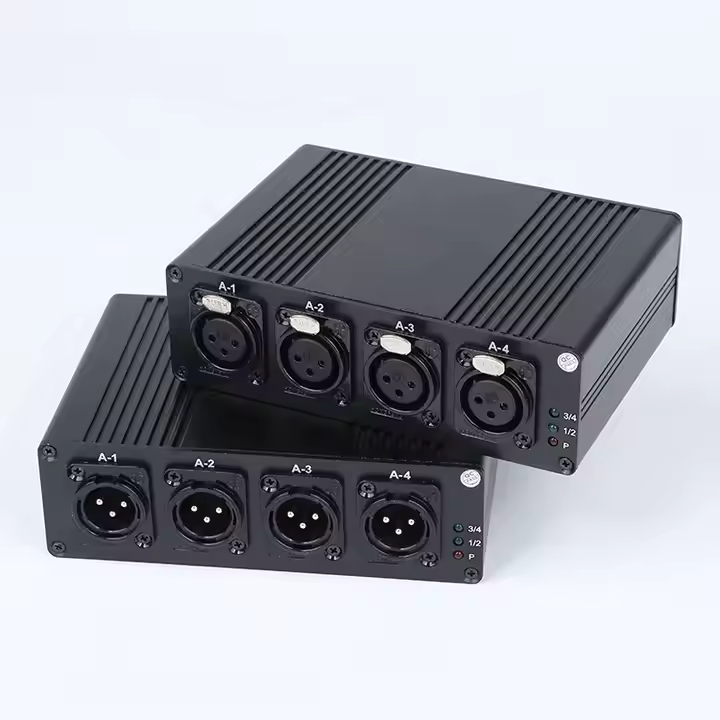In today’s highly connected world, signal transmission electronics form the core of modern communication systems. Whether it is smartphones, satellite communications, fiber optic networks, or the Internet of Things (IoT) and 5G technology, they all rely on efficient and reliable signal transmission devices. These devices are responsible for encoding, modulating, transmitting, receiving and decoding information, making real-time communication possible around the world. This article will explore in depth the working principles, key technologies, application scenarios and future development trends of signal transmission electronics.
1. Basic components of signal transmission electronics
Signal transmission electronics are usually composed of the following key modules:
Signal source: Generates the original electrical signal (such as audio, video or data).
Modulator: Converts the baseband signal into a high-frequency carrier signal suitable for transmission (such as amplitude modulation AM, frequency modulation FM, phase modulation PM, or digital modulation QAM, OFDM).
Transmitter: Amplifies the signal and sends it through an antenna, optical fiber or cable.
Transmission medium:
Wired transmission: coaxial cable, twisted pair (such as Ethernet), optical fiber
Wireless transmission: radio waves (Wi-Fi, 5G), microwaves, satellite communications
Receiver: capture the transmission signal and demodulate it to restore the original information.
Signal processor: error correction, decoding, and optimization of signal quality (such as DSP digital signal processing).
Modern equipment (such as 5G base stations, optical modules) usually integrate multiple modules to improve transmission efficiency and reliability.
2. Analysis of key technologies
1. Modulation and demodulation technology
Analog modulation: AM (amplitude modulation), FM (frequency modulation) – used for broadcast communications.
Digital modulation:
QAM (quadrature amplitude modulation): used for 4G/5G and cable TV.
OFDM (orthogonal frequency division multiplexing): the core technology of Wi-Fi 6 and 5G, with strong anti-interference ability.
2. Transmission medium technology
Fiber optic communication:
Single-mode fiber (long distance, such as submarine optical cable)
Multimode fiber (short distance, such as data center)
DWDM (Dense Wavelength Division Multiplexing): Improve fiber bandwidth, a single fiber can transmit hundreds of Gbps.
Wireless communication:
Millimeter wave (mmWave): 5G ultra-high-speed transmission (such as 28GHz frequency band).
MIMO (Multiple Input Multiple Output): Improve wireless capacity (such as Wi-Fi 6, 5G base station).
3. Signal processing technology
Error correction coding (FEC): Improve anti-interference ability (such as LDPC code, Polar code for 5G).
Adaptive equalization: Compensate for signal attenuation (such as high-speed SerDes chips for data centers).
Software defined radio (SDR): Flexible adjustment of communication protocols (military, satellite communication).
III. Main application areas
1. Communication network
Mobile communication: 4G/5G base station (Huawei, Ericsson Massive MIMO antenna).
Fiber optic backbone network: Huawei and ZTE’s 100G/400G optical modules.
Satellite communications: SpaceX Starlink (low-orbit satellite), Inmarsat.
2. Consumer electronics
Wi-Fi 6/6E routers: Qualcomm and Broadcom chips support multi-user MIMO.
Bluetooth 5.3: Low-power audio (LE Audio) for TWS headphones.
NFC/RFID: mobile payment (Apple Pay), logistics tracking.
3. Industry and military
Industrial Internet of Things (IIoT): Siemens PROFINET, 5G private network.
Radar and electronic warfare: phased array radar (AESA), frequency hopping anti-interference technology.
IV. Technical Challenges and Solutions
Challenges Solutions Cases
Signal attenuation EDFA, repeater Submarine cable relay station
Spectrum congestion Dynamic spectrum sharing (DSS), cognitive radio 5G and 4G coexistence
Delay issues Edge computing, low-orbit satellites Autonomous driving V2X communication
Security Quantum encryption (QKD), physical layer security China’s “Mozi” quantum communication satellite
V. Future development trends
6G communication (2030+):
Terahertz (THz) frequency band (100GHz+), ultra-high rate (1Tbps).
AI optimizes signal processing, and intelligent reflector (RIS) improves coverage.
Optical communication evolution:
Silicon photonics technology: Intel and Cisco’s optoelectronic integrated chips.
Space division multiplexing (SDM): Multi-core optical fiber improves capacity.
Quantum communication:
Quantum key distribution (QKD) achieves absolutely secure communication.
Satellite Internet:
SpaceX Starlink and Amazon Kuiper plan provide global coverage.

